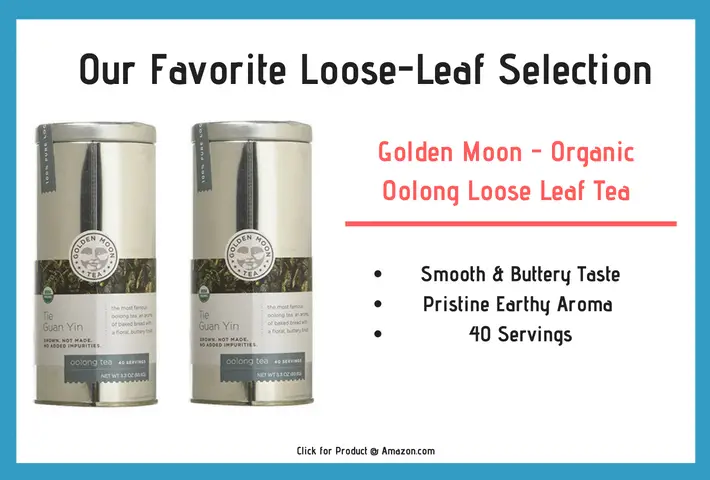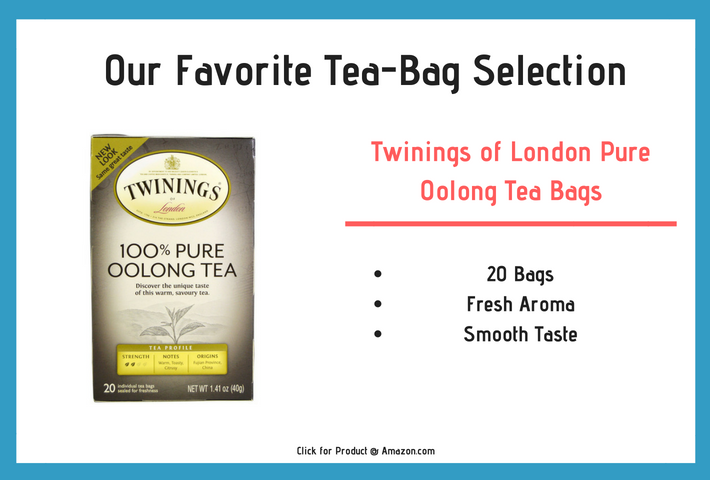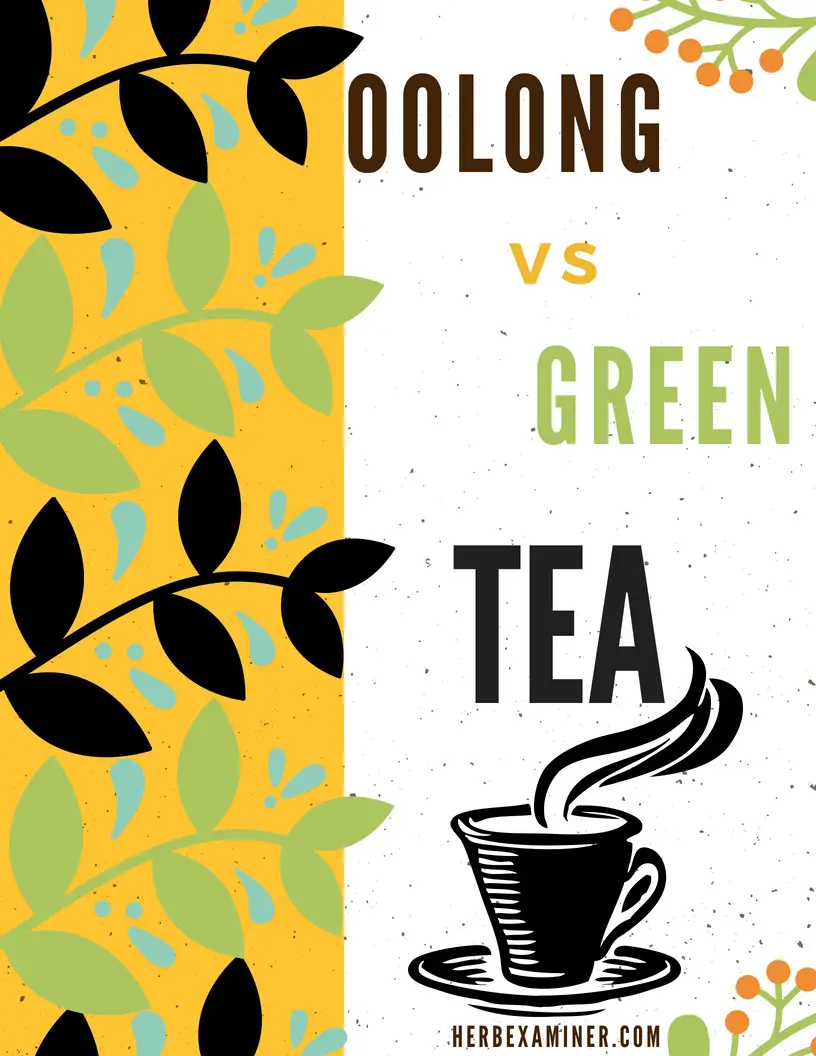
Every variety, flavor, texture, and aroma of tea comes from the same species of plant: Camellia sinensis.
To be exact, there are two variations of Camellia sinesis: Camellia sinensis var. sinensis (which is Chinese tea) and Camellia sinensis var. assamica (Indian tea). If a drink is made out of any plant species that is not Camellia sinesis, then it’s not actually tea. I’m looking at you, herbal tea!
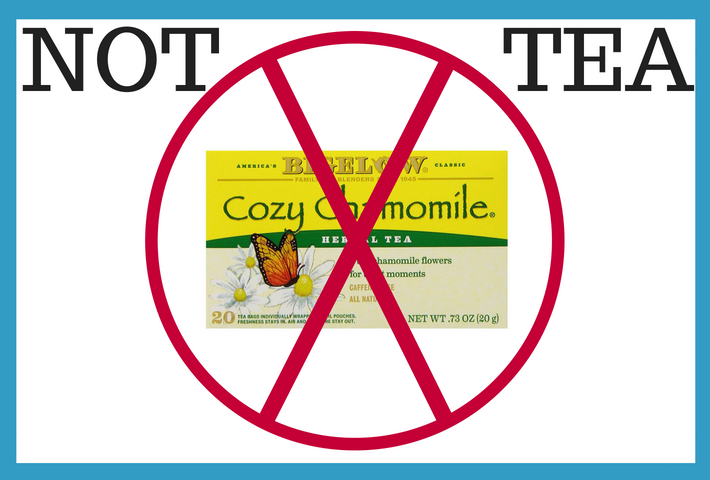
What is Oolong Tea?
So if every ‘real’ tea product is made from the same plant species – White, Black, Green, Oolong, Pu-er, Yellow, Matcha – why do they differ in taste, aroma, and physical appearance?
The answer: each variety of tea listed above is cultivated in a very specific way; differing cultivation processes create different teas!
For example, Green tea is made from unfermented leaves. The process is pretty simple:
1.) The leaves are harvested.
2.) The leaves are steamed and dried.
3.) The leaves are kneaded and pressed into tiny pallets.
4.) The leaves are then sold to wholesalers.
Green tea is, in essence, the ‘most raw’ variety of tea.
Oolong tea, on the other hand, is partially-fermented. The process is much more complex and really fascinating:
How is Oolong Tea Made?
1.) Farmers (usually in Thailand) harvest Camellia sinesis leaves from May to November. They generally try to pick what is called ‘the flush’ – two young leaves and a bud found at the top of the plant.

2.) Farmers then begin a process called solar-withering – the first part of the fermentation-oxidation method. Enzymes within the tea leaves begin to break down.
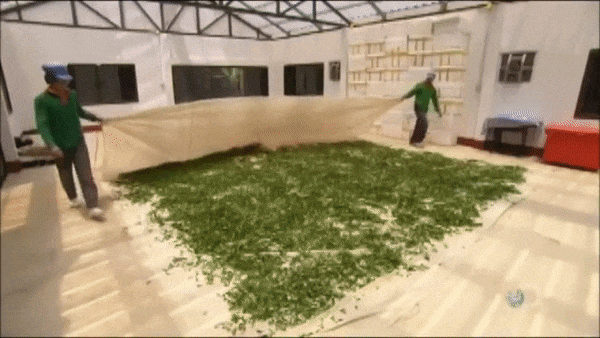
3.) Next, the leaves are transferred onto bamboo-trays for around 8 hours and gently stirred every 2 – 3 hours for further oxidation.
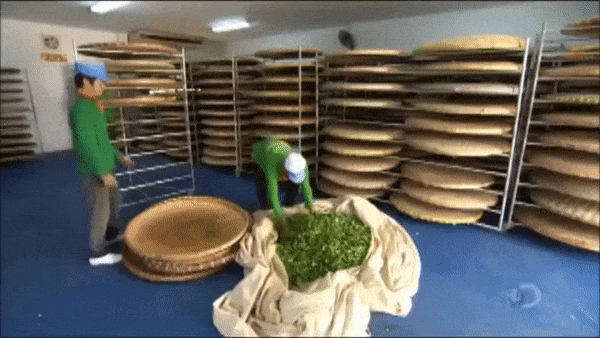
4.) The leaves then enter a rotating, tumbling drum. This process tears down the cell structures within the leaves allowing oxygen to penetrate deep inside which in turn rapidly speeds up the fermentation process.

5.) Once the leaves reach appropriate oxidation levels (there’s no metric for this, usually a ‘tea-master’ inspects the leaves and decides if they’re properly oxidized), they are then put into a gas-heated dryer to stop the oxidation process altogether.
This is called fixation. At this point, the leaves are somewhere between 8% – 80% oxidized, depending on the type of Oolong. This process determines the tea’s flavor and aroma.
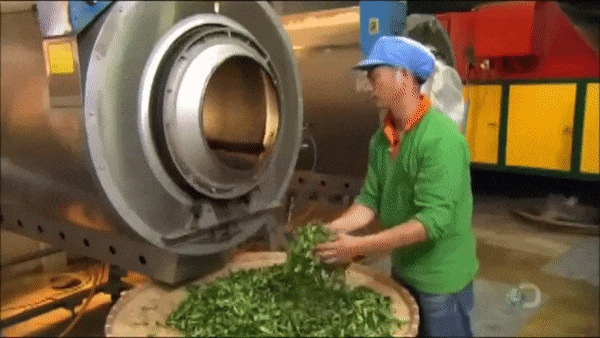
The leaves are then kneaded, dried and packaged for wholesalers.
Green Tea VS Oolong Tea
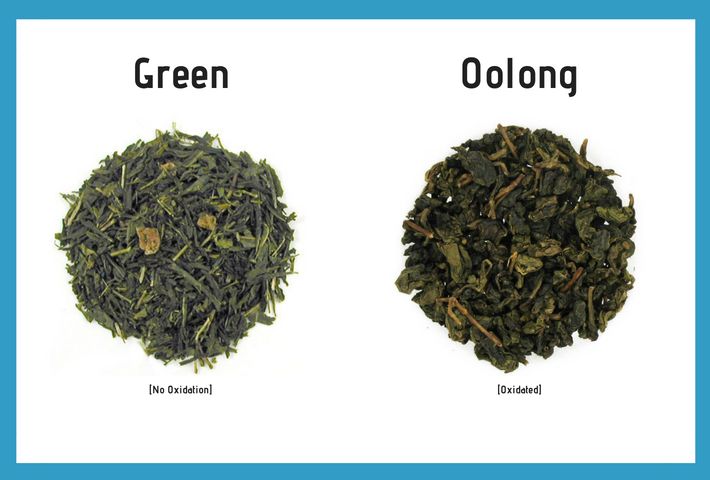
As you can see, the oxidation process darkens the leaves from a brighter green to a harsh copper-brown.
These characteristics are actually reflected in the flavor of the tea; Oolong tastes harsh and brisk, while green tea is lighter, bittersweet and nutty.
It’s worth mentioning that Oolong is less oxidized than classic black tea.
Oolong Tea VS Green Tea Benefits
Aside from flavor, aroma, and aesthetics, Oolong Tea also differs from Green tea medicinally.
Remember, the entire chemical structure of tea can be altered through the fermentation and oxidation process.
Here’s what you need to know:
1.) There are more catechins in Green tea than there are in Oolong tea.

2.) Several studies have shown that green tea may reduce the risk of many chronic diseases due to the high amounts of polyphenols (powerful antioxidant agents). There are fewer polyphenols in oxidated teas, like Oolong.

3.) A study on rats found that their overall levels of cholesterol and body fat were significantly reduced by intake of black, Oolong, and green tea.
This suggests that if you’re seeking health benefits and health benefits only, your best bet is to stick with green tea.
Even though Oolong possesses powerful anti-oxidant chemical compounds, the science overwhelmingly shows that green tea has more.
My recommendation? Drink whichever tastes better! The medicinal differences aren’t so large as to dismiss Oolong altogether. They’re both healthy beverages!
The Best Oolong Tea
Aside from their Loose Leaf Tea Sampler, this organic Oolong is the only purchase I’ve made from Golden Moon so far and I’m really impressed.
It’s earthy and rich but at the same time smooth and buttery. The tea also arrived in a nice reusable tin container that I’ll be putting to good use.
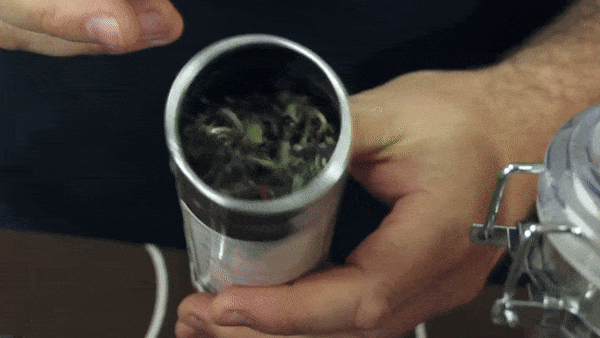
Teabags are sometimes looked down upon within the ‘tea community’ (whatever that is). Frankly, that’s understandable. They are certainly, on average, weaker than most loose leaf options.
But Twinings has the science of bags down better than any other company I’ve tried. They’ve been around since 1706, so it’s safe to say that they have a little bit of practice under their belts.
Stock your office or home pantry with a few boxes of this stuff and you’ll make everyone happy.
Thanks for reading!



